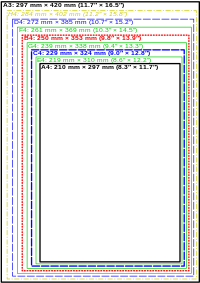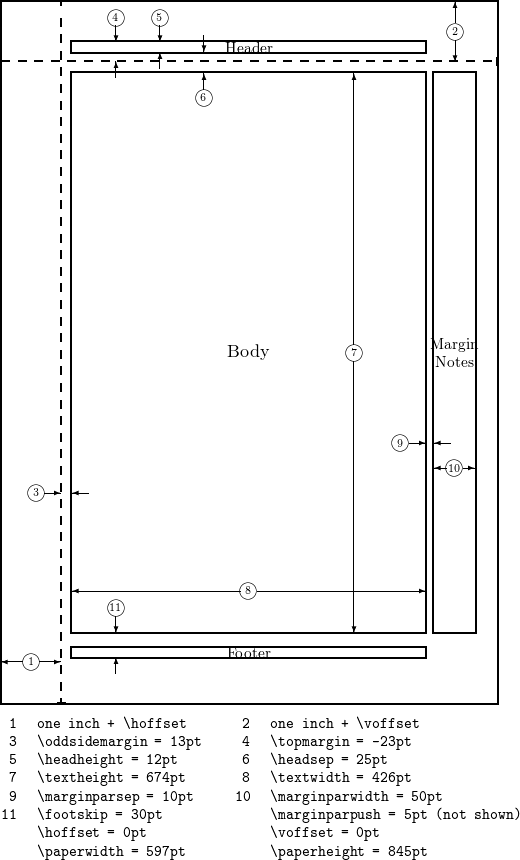a4 paper size is the most commonly used paper size in the world. It is defined as 210 millimeters (8.27 inches) wide and 297 millimeters (11.69 inches) high. This size was established in 1975 as part of the International Organization for Standardization’s (ISO) 216 standard for paper sizes. A4 paper is used for a wide variety of purposes, including printing, writing, copying, and faxing. It is also used for making books, magazines, and newspapers. The standard size of A4 paper makes it easy to share and compare documents, and it is also compatible with most printers and copiers.
A4 Paper Size: Overview and Significance

Understanding the Dimensions of A4 Paper
A4 paper size is standardized at 210 x 297 millimeters, which translates to 8.27 x 11.69 inches. This size is based on the metric system and provides a good balance between being compact enough for easy storage and large enough for comfortable reading and writing. The aspect ratio of A4 paper is approximately 1:√2, which means that when folded in half, the resulting sheets maintain the same proportions.
A4 Paper vs Other Paper Sizes: A Comparative Analysis
There are various other paper sizes available apart from A4, such as A3, A5, Letter, Legal, and Tabloid. Each of these sizes has its specific uses, but A4 remains the most popular choice due to its versatility and widespread adoption. A comparative analysis of A4 paper against other sizes can help determine the most suitable option for different types of documents.
| Paper Size | Dimensions (mm) | Dimensions (inches) |
|---|---|---|
| A4 | 210 x 297 | 8.27 x 11.69 |
| A3 | 297 x 420 | 11.69 x 16.54 |
| A5 | 148 x 210 | 5.83 x 8.27 |
| Letter | 216 x 279 | 8.5 x 11 |
| Legal | 216 x 356 | 8.5 x 14 |
| Tabloid | 279 x 432 | 11 x 17 |
Choosing the Right Paper Size for Your Documents
When selecting a paper size for your documents, consider factors such as the amount of content, intended use, and printing capabilities. A4 paper is suitable for standard documents, reports, letters, and presentations. For larger drawings or posters, A3 or Tabloid sizes may be more appropriate. Understanding the requirements of your document will help in choosing the right paper size.
Benefits of Using A4 Paper

There are several benefits to using A4 paper, including:
- Standard Size: A4 paper is the most commonly used paper size in the world, making it easy to share and compare documents.
- Easy to Store: A4 paper is compact, making it convenient to store in filing cabinets and on shelves.
- Affordable: A4 paper is cost-effective, suitable for businesses and individuals on a budget.
How to Use A4 Paper
A4 paper can be utilized for various purposes, such as:
- Printing: Ideal for documents, reports, photos, and images.
- Writing: Suitable for letters, notes, and other written content.
- Copying: Compatible with most copiers for duplication.
Optimizing Document Formatting for A4 Paper

When creating documents for A4 paper, consider the following tips to optimize formatting:
- Margins: Leave adequate margins to avoid content getting cut off during printing.
- Font Size: Choose a readable font size for comfortable reading.
- Layout: Organize content logically to enhance readability and visual appeal.
Table: Recommended Margins for A4 Paper
| Top | Bottom | Left | Right |
|---|---|---|---|
| 25 mm | 25 mm | 20 mm | 20 mm |
Printing Considerations for A4 Paper
To ensure quality printing on A4 paper, keep the following considerations in mind:
- Resolution: Use high-resolution images and text for sharp prints.
- Paper Type: Select the appropriate paper weight and finish for the desired result.
- Printer Settings: Adjust settings for paper size, orientation, and quality.
Environmental Impact of A4 Paper Production
The production of A4 paper can have environmental implications due to the consumption of resources like wood pulp, water, and energy. Sustainable practices such as recycling, responsible sourcing, and waste reduction are essential to minimize the impact on the environment. Choosing eco-friendly paper options and promoting paperless initiatives can contribute to sustainability efforts.
History and Evolution of A4 Paper Size
The development of A4 paper size can be traced back to the traditional papermaking processes and the need for standardized dimensions. Over time, advancements in printing technology and international trade led to the establishment of global standards for paper sizes. The adoption of a4 size as an international standard marked a significant milestone in streamlining communication and document exchange across borders.
Global Standardization of A4 Paper Size
The ISO 216 standard for paper sizes, including A4, has been widely adopted by countries around the world. This standardization facilitates seamless compatibility between different printing systems, software applications, and office equipment. The prevalence of A4 paper in international markets simplifies document handling and promotes efficient communication in diverse industries.
Future Trends in Paper Size and Sustainability
As digital technologies continue to evolve and the demand for sustainable practices grows, the future of paper sizes and production methods is undergoing transformation. Innovations such as electronic documentation, digital archiving, and eco-friendly materials are shaping the way paper is used and manufactured. Embracing these trends can lead to a more environmentally conscious approach to paper usage while adapting to changing business needs.
Conclusion
In conclusion, the A4 paper size holds a significant position as the international standard for printing and writing due to its practicality, versatility, and widespread acceptance. Understanding the dimensions of A4 paper, comparing it with other sizes, and optimizing document formatting are essential aspects of utilizing this versatile paper size effectively. By considering printing considerations, environmental impact, historical evolution, global standardization, and future trends, users can make informed decisions regarding A4 paper usage while promoting sustainability and efficiency in document management.| 297 x 420 | 11.69 x 16.54 |
| A5 | 148 x 210 | 5.83 x 8.27 |
| Letter | 216 x 279 | 8.5 x 11 |
| Legal | 216 x 356 | 8.5 x 14 |
| Tabloid | 279 x 432 | 11 x 17 |
Choosing the Right Paper Size for Your Documents
When selecting a paper size for your documents, consider factors such as the amount of content, intended use, and printing capabilities. A4 paper is suitable for standard documents, reports, letters, and presentations. For larger drawings or posters, A3 or Tabloid sizes may be more appropriate. Understanding the requirements of your document will help in choosing the right paper size.
Benefits of Using A4 Paper

There are several benefits to using A4 paper, including:
- Standard Size: A4 paper is the most commonly used paper size in the world, making it easy to share and compare documents.
- Easy to Store: A4 paper is compact, making it convenient to store in filing cabinets and on shelves.
- Affordable: A4 paper is cost-effective, suitable for businesses and individuals on a budget.
How to Use A4 Paper
A4 paper can be utilized for various purposes, such as:
- Printing: Ideal for documents, reports, photos, and images.
- Writing: Suitable for letters, notes, and other written content.
- Copying: Compatible with most copiers for duplication.
Optimizing Document Formatting for A4 Paper

When creating documents for A4 paper, consider the following tips to optimize formatting:
- Margins: Leave adequate margins to avoid content getting cut off during printing.
- Font Size: Choose a readable font size for comfortable reading.
- Layout: Organize content logically to enhance readability and visual appeal.
Table: Recommended Margins for A4 Paper
| Top | Bottom | Left | Right |
|---|---|---|---|
| 25 mm | 25 mm | 20 mm | 20 mm |
Printing Considerations for A4 Paper
To ensure quality printing on A4 paper, keep the following considerations in mind:
- Resolution: Use high-resolution images and text for sharp prints.
- Paper Type: Select the appropriate paper weight and finish for the desired result.
- Printer Settings: Adjust settings for paper size, orientation, and quality.
Environmental Impact of A4 Paper Production
The production of A4 paper can have environmental implications due to the consumption of resources like wood pulp, water, and energy. Sustainable practices such as recycling, responsible sourcing, and waste reduction are essential to minimize the impact on the environment. Choosing eco-friendly paper options and promoting paperless initiatives can contribute to sustainability efforts.
History and Evolution of A4 Paper Size
The development of A4 paper size can be traced back to the traditional papermaking processes and the need for standardized dimensions. Over time, advancements in printing technology and international trade led to the establishment of global standards for paper sizes. The adoption of A4 size as an international standard marked a significant milestone in streamlining communication and document exchange across borders.
Global Standardization of A4 Paper Size
The ISO 216 standard for paper sizes, including A4, has been widely adopted by countries around the world. This standardization facilitates seamless compatibility between different printing systems, software applications, and office equipment. The prevalence of A4 paper in international markets simplifies document handling and promotes efficient communication in diverse industries.
Future Trends in Paper Size and Sustainability
As digital technologies continue to evolve and the demand for sustainable practices grows, the future of paper sizes and production methods is undergoing transformation. Innovations such as electronic documentation, digital archiving, and eco-friendly materials are shaping the way paper is used and manufactured. Embracing these trends can lead to a more environmentally conscious approach to paper usage while adapting to changing business needs.
Conclusion
In conclusion, the A4 paper size holds a significant position as the international standard for printing and writing due to its practicality, versatility, and widespread acceptance. Understanding the dimensions of A4 paper, comparing it with other sizes, and optimizing document formatting are essential aspects of utilizing this versatile paper size effectively. By considering printing considerations, environmental impact, historical evolution, global standardization, and future trends, users can make informed decisions regarding A4 paper usage while promoting sustainability and efficiency in document management.